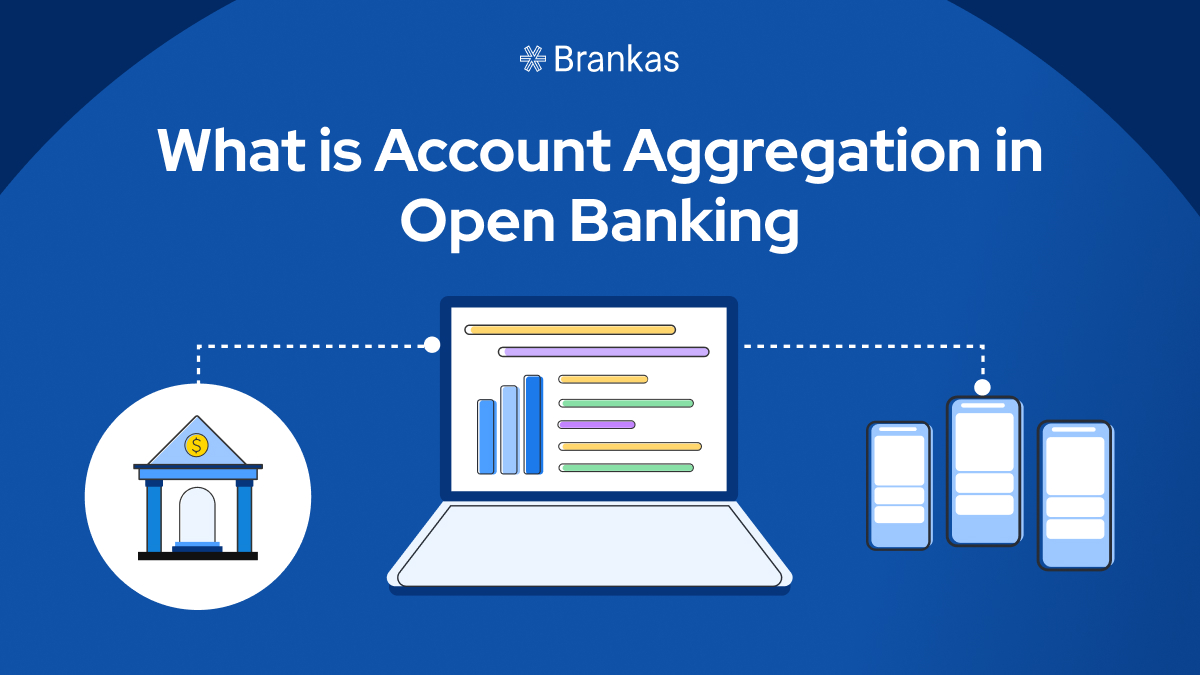Whether you’re a customer or a business owner, tracking your expenses and transactions can be difficult. Fortunately, account aggregation in open banking is here to take the guesswork out of financial management. Account aggregators consolidate data from multiple bank accounts, credit cards, and investment portfolios into a single, streamlined view. This means there’s no more need to go on different platforms.
So, what is account aggregation, and how does it work? Let’s find out.
Account Aggregation in a Disconnected Fintech Ecosystem
To truly appreciate account aggregation, you need to understand it in the context of a disconnected financial ecosystem.
Imagine you’re a business owner with different types of accounts with different banks. You also have several credit cards and stocks. In addition, you’re using a budgeting tool and expense tracker to manage your finances. Most likely, each of these has its own online or mobile application. These apps operate independently, making it hard to remember multiple logins and passwords and keep track of where your money goes and where it’s coming from.
This disconnect in the fintech ecosystem can be highly restrictive for customers and financial institutions alike. This is where open banking and account aggregation come in.
Account Aggregation in Open Banking: An Overview
What is account aggregation in open banking? Simply put, account aggregation is a way to collect financial data from multiple accounts and store it in one place. Think of it as your personal financial dashboard. For example, an online banking service may provide an app where account holders can see all their balances, accounts, and financial insights in one go.
Account aggregation is made possible by open banking. Unlike older methods that require you to share login credentials (which isn’t safe), open banking allows financial institutions to aggregate data across all the platforms you use.
How Does Account Aggregation Work?
Account aggregation comes from third-party providers or TPPs who fetch data from multiple sources. To do this, they use open banking to unlock user data with the user’s consent. Open banking lets account holders decide who can access their financial data and how they can use it.
There are two ways that financial institutions and fintechs enable account aggregation in their services:
Screen Scraping
Screen scraping is the practice of collecting data from one app and repurposing it for other uses. For instance, an account holder can provide access to their username and password for each account they wish to include in the aggregation. If users want visibility into their transactions across all their accounts, they would have to manually upload their information onto a fintech provider’s application. In turn, fintechs would request these login credentials from across several accounts.
Application Programming Interfaces (APIs)
Application programming interfaces (APIs) help aggregate financial data through more efficient and secure connections. Instead of screen scraping (where you have to give out your banking passwords), open banking APIs allow data to be shared securely between banks and fintech apps. The best part? You stay in control. You decide which accounts to connect and what data is shared, plus you can revoke access anytime.

Benefits of Account Aggregation
Open banking-enabled account aggregation has transformed how consumers and businesses manage their money and make decisions based on financial insights. Here are the benefits of account aggregation:
For Consumers
1. Clear Picture of Finances
Account holders are able to see all their investments, checking, and savings accounts in one platform. This big-picture view allows consumers to take the necessary steps in achieving their financial goals, whether that’s to save, invest, or budget more wisely. Many budgeting apps use open banking in account aggregation to categorize transactions and offer recommendations depending on where money is going, helping users make smarter financial decisions.
2. Convenience and Accessibility
Convenience and accessibility are some of the primary benefits of account aggregation for users. Consumers can connect accounts and grant or remove access to their information in a matter of seconds.
3. All-in-One Financial Management Tool
Aggregating accounts can be beneficial for families or couples who have multiple accounts and goals. If you’re saving for college or retirement, getting health insurance, or diversifying your portfolio, account aggregation gives you a 360-degree view of your and your loved ones’ assets.
4. Easier Loan and Credit Applications
Lenders often require proof of income and a credit history when customers apply for a loan. With open banking, consumers can quickly share their financial data with lenders. This helps speed up approvals while ensuring that lenders arrive at a more accurate assessment of an applicant’s financial standing.
5. Automation
Some fintech apps use aggregated account data to facilitate easier payments. For example, instead of transferring money manually between accounts, users can move funds more conveniently within a single platform.
6. Improved Security and Control
Open banking account aggregation relies on secure APIs. This means users have full control over what data they share. API-based account aggregation is also encrypted and monitored under a regulatory framework, which means there are security features to protect your data from cybersecurity risks.
For Banks and Businesses
1. More Personalized Financial Services
Fintech apps and banks that leverage open finance platforms can analyze aggregated financial data to offer personalized recommendations. Prioritizing customers’ experience and offering carefully tailored products and services that address their pain points shows them how genuinely the bank cares about their financial well-being. This approach helps financial institutions build a positive reputation and fosters brand loyalty.
2. More Informed Credit and Loan Decisions
Access to a customer’s full financial history allows banks to make better lending decisions. Instead of relying solely on credit scores, they can analyze real-time income, spending habits, and existing debts.
3. New Revenue Streams Through Fintech Partnerships
Banks that integrate with APIs can collaborate with fintech companies to offer new services, such as payment disbursement, e-wallet top-ups, and e-commerce checkouts, generating additional revenue.
4. Faster Onboarding and KYC Compliance
Banks can use account aggregation to instantly access verified and updated financial data. This reduces onboarding friction and ensures smoother compliance with KYC (Know Your Customer) regulations.
5. Competitive Edge
Banks that have access to richer financial data via account aggregation can develop more competitive loan offers, savings accounts, and investment products that are better suited to their customers’ actual financial behaviors and patterns. Companies that offer account aggregation will not only see their customers’ standing; they also get a glimpse of what their competitors are up to. Every time a user connects an account with your competitor, it gives you an edge. This works the other way around, too, highlighting the importance of being the one that offers account aggregation first.

Concerns and Challenges with Account Aggregation
The biggest concerns with sharing financial data through account aggregation are privacy and security. Users must explicitly authorize any data sharing, and the banks can continue using that data until the user revokes permission. Banks are responsible for ensuring customers’ privacy, providing full disclosure, and maintaining trust.
Next, account aggregation is secure because it operates on API-based data sharing. Banks and fintechs use encryption and multi-factor authentication to safeguard financial data and reduce fraud risks.
Final Thoughts
Account aggregation and open banking go hand in hand in driving innovation and growth in the fintech industry. In fact, account aggregation is the very pillar of open banking, as it requires financial institutions to share their customer’s data as long as consent is provided. The ultimate goal is to make financial management easier and more secure. As the fintech ecosystem continues to grow and consumer demands evolve, expect even more ways to manage your money through open banking solutions.
Seamless Financial Connectivity with Brankas Open Finance Suite
Managing financial data across multiple banks and platforms can be overwhelming, but Brankas makes it seamless with its open finance suite. Brankas’ solutions are designed for banks, fintech companies, and businesses, and they enable secure and real-time account aggregation, allowing users to access financial data in one place without the hassle of switching between different apps.
Through Brankas, users can link multiple bank accounts, view transaction histories, and automate tasks—all through a secure API-powered platform. This enhances the user experience and empowers business owners to take better control of their finances.
For fintechs and banks, Brankas can utilize real-time financial data to improve risk assessments, facilitate onboarding, and offer more competitive financial products and services.
Unlock the full potential of account aggregation in open banking today. Request a free demo.
